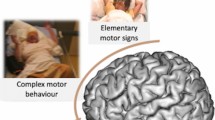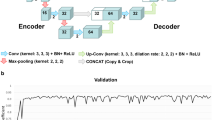Abstract
With the rapid developments in image processing, new clinical applications of manipulation and three-dimensional (3-D) reconstruction of neuro-imaging are evolving. Combination with other non-invasive techniques aimed at localising electric sources in the brain is of particular interest. These techniques rely on the recording of brain electrical activity and/or the associated magnetic fields from multiple areas on the scalp. Data obtained from an electroencephalogram (EEG) or from magnetoencephalography (MEG) can be fused in 3-D arrangement with anatomical [magnetic resonance imaging/computerised tomography (MRI/CT)] and/or metabolic [positron emission tomography (PET)] data. Such techniques highlight information on the functional correlates of anatomical or space-occupying lesions and their role in the localisation of related symptomatic epilepsy. In the present study we report on methodological issues and preliminary clinical data on spectral EEG/MRI co-registration procedures, offering two examples of children presenting with hemispheric lesions, one frontal tumour and one temporal arterio-venous malformation. The EEG was acquired from 32/64 electrode location. The electrode position and that of four reference points were measured with a dual sensor Polhemus 3D Isotrak digitiser. Sources of EEG activity were determined in 3-D space with the inverse solution method low resolution electromagnetic tomography (LORETA), providing for each frequency component, the topographic distribution of active electrical sources. The positions of the reference points were also measured on MRI, and co-registration of EEG and MRI was achieved using a transformation algorithm. The reconstructed 3-D images of co-registered EEG/MRI clearly demonstrate the relationship between the space-occupying lesion and the epileptic activity. Preliminary results show that in all the patients it was possible to identify with a remarkable accuracy the 3-D topographic relationship between lesion and cortical areas showing localised abnormalities on the EEG. The present method could further enhance the understanding of the effect of resective treatment of structural lesions on brain functioning. The new combined images can be used in combination with image-guided surgery equipment to modify effective surgical resection.
Similar content being viewed by others
Author information
Authors and Affiliations
Additional information
Received: 21 March 2000
Rights and permissions
About this article
Cite this article
Sgouros, S., Seri, S. & Natarajan, K. The clinical value of electroencephalogram/magnetic resonance imaging co-registration and three-dimensional reconstruction in the surgical treatment of epileptogenic lesions. Child's Nerv Syst 17, 139–144 (2001). https://doi.org/10.1007/s003810000357
Issue Date:
DOI: https://doi.org/10.1007/s003810000357




